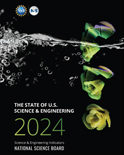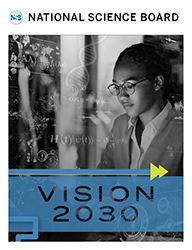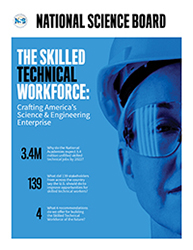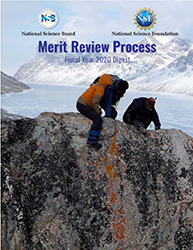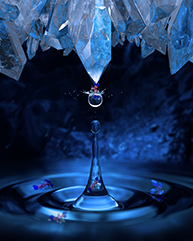News Release 05-196
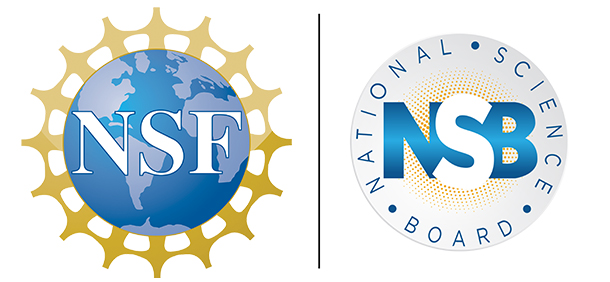
President Announces 2004 Medal of Science Winners
Recipients include agriculture scientist, transplant surgeon and other distinguished researchers
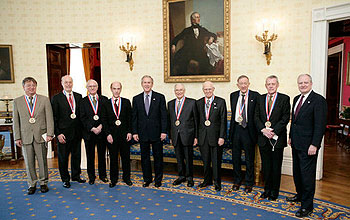
President George W. Bush with the recipients of the National Medal Science at the White House. (Credit and Larger Version)
November 15, 2005
The National Science Foundation congratulates the recipients of the nation's highest scientific honor, the 2004 National Medal of Science, as announced by the president on Nov. 14. We celebrate not only the achievements of these eight pioneers, but also the scientific and technological advances they helped to generate. We are especially pleased that six of the eight have received public funding through NSF at some point in their careers. In that way, the public shares indirectly in their honor - as both sponsors and beneficiaries of their work.
The award was established in 1959 and is administered by NSF for the president. Awards programs exist primarily to honor the recipients and recognize their dedicated work that often occurred in obscurity. But they also serve to inspire and enlighten others. The National Medal of Science helps remind us why we invest in those who quietly push the frontiers of knowledge. Even though we often don't know where that investment will lead, we do know it can bring many benefits to society. That is why NSF continues to fund the cutting edge of research. We can't afford not to.
NSF joins the American people in congratulating these heroes of science and engineering, who are advocates for the American public, seeking ways to improve both our understanding of our world and the way we live within it.
Arden L. Bement, Jr.
Director
National Science Foundation
Read the NSF Medals of Science fact sheet.
-NSF-
Recipients of the 2004 National Medal of Science*
Behavioral or Social Sciences
- Kenneth J. Arrow is professor of economics (emeritus) at Stanford University. He made groundbreaking contributions to the pure theory of economics but also holds a broad understanding of the social science arena in which theories are confronted and practical lessons worked out. His fundamental research on risk perception and behavior under uncertainty, and on equilibrium in markets with imperfect information, began a revolution in the design and analysis of market allocation mechanisms. Arrow received a Ph.D. degree in economics from Columbia University. His dissertation was published in 1951 as the classic, Social Choice and Individual Values. He received the Nobel Prize in Economics in 1972 and is a member of the National Academy if Sciences.
Biological Sciences
- Regarded as the "Father of the Green Revolution," Norman Borlaug, won the Nobel Peace Prize in 1970 for his efforts to feed the world’s hungry through improved farming techniques. He worked not only with farmers on agricultural methods, but also with governments and institutions on farm credit and pricing policies. Through his successful efforts to demonstrate to farmers and governments how to grow new, high-yielding varieties of wheat and other cereal crops, Borlaug has enhanced peace by preventing the malnutrition and starvation of millions of people around the world. Borlaug received a Ph.D. degree in plant pathology from the University of Minnesota. He is currently a distinguished professor of international agriculture at Texas A&M University and a member of the National Academy of Sciences,
Web site: www.normanborlaug.org
- Phillip A. Sharp received the Nobel Prize in Physiology or Medicine in 1993 for the discovery of RNA splicing, a biological process fundamental to understanding the structure of genes and genomes of higher organisms. A member of the National Academy of Sciences, he is regarded as an inspirational and tireless leader and teacher, and a generous public servant. He co-founded the biopharmaceutical company, BioGen, and sits on its board of directors. Sharp, who received a Ph.D. degree in chemistry from the University of Illinois, is currently institute professor at the Massachusetts Institute of Technology.
Web site: http://web.mit.edu/sharplab/
- Thomas E. Starzl, professor of surgery at the University of Pittsburgh School of Medicine, performed the world’s first liver transplant in 1963 after painstakingly working out the technical aspects of the procedure in animals. Throughout his career he has continued to make landmark advancements in medicine and science by identifying better ways to control organ rejection and offering novel approaches to enhance understanding of disease processes. More recently, he has made important discoveries about immune tolerance, which have completely changed the face and conventional paradigms of transplant immunology. Starzl receives the Medal of Science for his unique contributions to basic and applied science that resulted in the emergence of organ transplantation as a widely available treatment. He received M.D. and Ph.D. degrees from the Northwestern University Medical School and is a member of the Institute of Medicine.
Web site: http://www.sti.upmc.edu/STI_Patient_web/sti/ thomas.starzl.asp
Chemistry
- Stephen J. Lippard is the Arthur Amos Noyes Professor of Chemistry at the Massachusetts Institute of Technology. An expert in the interactions between metal ions and biological molecules, Lippard is considered the leader in inorganic chemistry in living systems. He revealed the mechanism by which the anti-cancer drug cisplatin binds to DNA and inhibits growth in cancer cells and is currently applying that knowledge along with other chemical and gene-therapy strategies to develop better platinum-based molecules and protocols for cancer chemotherapy. Lippard is a member of the Institute of Medicine and the National Academy of Sciences. He received a Ph.D. degree in chemistry from MIT.
Web site: http://web.mit.edu/chemistry/lippardlab/
Engineering
- Edwin N. Lightfoot is Hilldale Professor (emeritus) at the University of Wisconsin, Madison. He was one of the first biochemical engineering professors in the United States and a forerunner in biomedical engineering. He is awarded the Medal of Science for vigorous and sustained leadership in developing the fields of biochemical and biomedical engineering, particularly in the areas of blood oxygenation, oxygen diffusion into tissue, mathematical modeling of biological pathways, bioseparations and studies of diabetic responses. Lightfoot’s 1960 textbook, Transport Phenomena, helped provide the technological underpinnings of the modern biotechnology industry. He received a Ph.D. degree in chemical engineering from Cornell University and is a member of the National Academy of Sciences.
Mathematics or Computer ScienceWeb site: http://www.engr.wisc.edu/che/faculty/ lightfoot_edwin.html#education
- A leading figure in mathematics, Dennis P. Sullivan, holds the Einstein Chair at the City University of New York and is also a Distinguished Professor of Mathematics at the State University of New York at Stony Brook. His work addresses the many shapes and guises in which a single topological form can appear. Sullivan receives the Medal of Science for solving some of the deepest problems in mathematics, for the creation of entirely new fields of mathematics and for uncovering striking, unexpected connections between seemingly unrelated fields. Sullivan received a Ph.D. degree from Princeton University. He is a member of the National Academy of Sciences.
Physical Sciences
- Robert N. Clayton is the Enrico Fermi Distinguished Service Professor (emeritus) at the University of Chicago. He received a Ph.D. degree in geochemistry from the California Institute of Technology. His studies focus on oxygen isotopes found in meteorites to understand the chemical processes by which cold, dark molecular clouds evolve into stars and planetary systems. A member of the National Academy of Sciences, Clayton is awarded the Medal of Science for his leading contributions to cosmic chemistry, from pre-solar system dust to planets, and for being an exemplary role model as a mentor, teacher and advocate for rigorous science.
* The President officially presented the awards on Feb. 13, 2006, in a White House ceremony.
Useful NSB Web Sites:
Home Page: http://www.nsf.gov/nsb
Media Contact: http://www.nsf.gov/staff/staff_bio.jsp?lan=nlymn&org=NSF
News: http://www.nsf.gov/nsb/news
Meetings: http://www.nsf.gov/nsb/meetings
Publications: http://www.nsf.gov/nsb/publications
Facebook: https://www.facebook.com/NationalScienceBoard
Twitter: Twitter: https://twitter.com/intent/user?screen_name=NSF_NSB
YouTube: https://www.youtube.com/channel/UCkrHRzuGSrPp2haQs0T_Pww
To view PDF documents, please download Adobe Acrobat Reader.
